What is Bag Filter Housing?
A bag filter housing is a specialized filtration system used to remove impurities from liquids in industrial processes. It consists of a durable housing, typically made of metal or plastic, designed to accommodate filter bags. These filter bags, made from various materials such as polyester or nylon, effectively capture particles and contaminants present in the liquid as it passes through the housing. Bag filter housings are widely employed in diverse applications, including water treatment, chemical processing, and oil and gas industries, where the efficient removal of solid particles is crucial for maintaining product quality and process integrity. The design of the bag filter housing allows for easy installation, maintenance, and replacement of filter bags, making it a versatile and essential component in many industrial filtration systems.
Advantages of Bag Filter Housing
Versatility
Bag filter housings are versatile and can be used in a wide range of applications, including water treatment, food and beverage processing, pharmaceuticals, chemicals, and more.
Easy installation and maintenance
Bag filter housings are designed for easy installation and maintenance. The replacement of filter bags is a straightforward process, making it convenient for operators and minimizing downtime.
Cost-effective filtration
They provide cost-effective filtration solutions, as the filter bags are generally more affordable than some alternative filter media. Additionally, they often have a longer lifespan, reducing replacement and maintenance costs.
High dirt-holding capacity
Bag filters have a high dirt-holding capacity, meaning they can effectively capture and retain a significant amount of contaminants before requiring replacement. This helps in extending the time between filter changes.
Why Choose Us?
R&D
Invests heavily in R&D, continuously improving their product offerings and staying at the forefront of new material technology. dedication to innovation means customers can benefit from cutting-edge solutions.
Customization services
Provide customization services to meet specific customer requirements, ensuring that clients receive products that exactly fit their needs.
Experienced team
The company employs a team of experienced professionals with expertise in new material technologies, ensuring that their products and services are backed by deep knowledge and technical proficiency.
24h online service
We try and respond to all concerns within 24 hours and our teams are always at your disposal in case of any emergencies.
Types of Bag Filter Housing
Single bag filter housings
These are basic housings designed to accommodate a single filter bag. They are suitable for applications with lower flow rates and where space is limited.
Multi-bag filter housings
Multi-bag housings are larger and capable of holding multiple filter bags simultaneously. They are used in applications with higher flow rates and where a greater filtration surface area is required to handle larger volumes of liquid.
Side entry bag filter housings
In these housings, filter bags are inserted and removed from the side. This design is convenient for applications where overhead space is limited, as it allows for easier access.
Top entry bag filter housings
In top entry housings, filter bags are inserted and replaced from the top of the housing. This design is often preferred in applications where there is ample overhead space for bag replacement.
In-line bag filter housings
These housings are installed in-line with the fluid pipeline, allowing for a continuous flow of liquid through the filter bags. In-line configurations are common in industrial processes where uninterrupted flow is crucial.
Duplex bag filter housings
Duplex systems consist of two separate filter housings connected in parallel. This design enables continuous filtration even during maintenance or replacement of filter bags. When one housing is offline, the other remains operational.
Sanitary bag filter housings
Designed for applications in the food and beverage, pharmaceutical, and biotech industries, sanitary bag filter housings adhere to strict hygienic standards. They are constructed with smooth surfaces and easy-to-clean materials to prevent contamination.
High-pressure bag filter housings
These housings are specifically designed to withstand higher pressure levels, making them suitable for applications where the filtration system needs to handle fluids under elevated pressure.
Plastic bag filter housings
While many bag filter housings are made from stainless steel, there are also options constructed from durable plastics. These are often used in corrosive environments or where weight considerations are important.
Material selection
Depending on the application and environmental factors, materials are selected for the housing. Common materials include stainless steel for industrial applications or corrosion-resistant plastics for certain environments.
Cutting and shaping
Sheets or tubes of the chosen material are cut and shaped according to the design specifications.
Precision cutting tools and machining processes may be employed to ensure accurate dimensions.
Welding or assembly
Pieces of the housing are welded or assembled together. Welding is a common method for metal housings, while plastics may be joined using adhesives, heat sealing, or other bonding methods.
Care is taken to create strong, leak-proof seams to withstand the pressure requirements of the filtration system.
Surface treatment
The housing may undergo surface treatments, such as polishing or coating, to enhance its corrosion resistance, improve aesthetics, or meet specific industry standards.
Drilling and machining
Housings are drilled and machined to create openings for inlet and outlet connections, pressure gauges, vents, and other necessary features.
Installation of support structures
Internal support structures or brackets may be installed to provide stability to the housing and secure the filter bags in place.
Testing
Quality control is a critical step. Housings may undergo various tests to ensure they meet design specifications and industry standards. This may include pressure testing, leak testing, and dimensional checks.
Surface finish
Depending on the material and application, a final surface finish may be applied to the housing. This could involve polishing, coating, or other treatments to enhance durability and aesthetics.
How to Choose Bag Filter Housing

Flow rate requirements
Determine the maximum flow rate of your liquid process. Choose a bag filter housing that can handle the required flow while maintaining efficient filtration. Consider both the initial flow rate and any potential future increases.
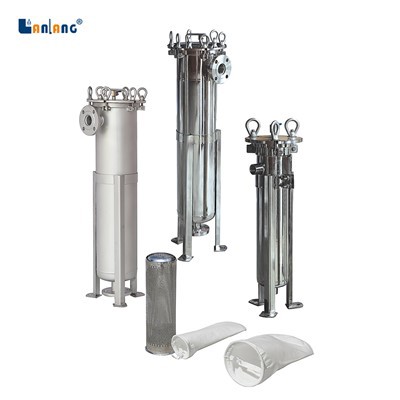
Material compatibility
Evaluate the compatibility of the housing material with the liquid being filtered. For corrosive or aggressive liquids, consider materials like stainless steel or plastic that resist corrosion. Ensure the selected material is compatible with the chemical composition of the fluid.
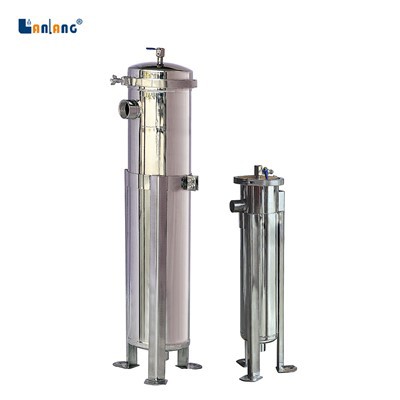
Filtration requirements
Define the level of filtration required for your process. Different filter bag materials and micron ratings are suitable for specific particle sizes. Ensure the bag filter housing is compatible with the desired filter bags to achieve the desired level of particle removal.

Installation and maintenance ease
Evaluate the ease of installation, replacement, and maintenance. Choose a bag filter housing design that aligns with your operational preferences and available space. Consider whether the housing allows for top or side entry, and if it facilitates easy access during bag changes.
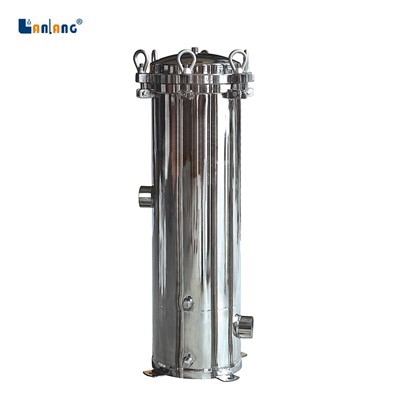
Pressure ratings
Consider the operating pressure of your system. Select a bag filter housing with a pressure rating that exceeds your system's maximum operating pressure to ensure safety and longevity.
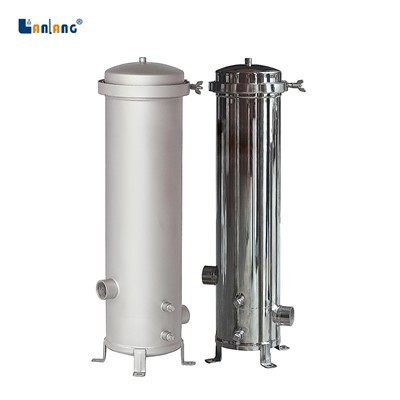
Temperature range
Consider the temperature of the liquid being processed. Choose a bag filter housing that can withstand the temperature extremes encountered in your application without compromising its structural integrity or the effectiveness of the filter bags.

Number of bags
Determine the number of filter bags needed based on the expected flow rate and particle load. For applications with higher flow rates or higher levels of contamination, a multi-bag housing may be more suitable.
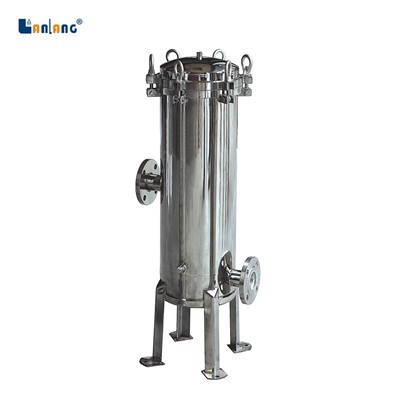
Connection type
Consider the type of connections needed for your system, such as flanged, threaded, or sanitary connections. Ensure compatibility with your existing piping system to streamline installation.
Application of Bag Filter Housing
Water treatment
Bag filter housings are used in water treatment plants to remove impurities, sediment, and particulate matter from water sources, ensuring the production of clean and safe drinking water.
Chemical processing
In chemical manufacturing, bag filter housings are employed to filter chemicals and solvents, preventing contaminants from affecting the quality of chemical products and ensuring process integrity.
Oil and gas industry
Bag filter housings are utilized in the oil and gas sector to filter hydrocarbons, impurities, and solid particles from various fluids, including crude oil, natural gas, and hydraulic fluids.
Food and beverage processing
Bag filter housings play a crucial role in the food and beverage industry by filtering liquids such as juices, syrups, and edible oils to maintain product quality and meet hygiene standards.
Pharmaceutical manufacturing
In pharmaceutical production, bag filter housings are used to filter pharmaceutical solutions, ensuring the removal of particles and contaminants to meet strict quality and safety standards.
Automotive industry
Bag filter housings are employed in automotive manufacturing processes to filter coolant fluids, oils, and other liquids used in various stages of production, preventing contaminants from affecting the performance of automotive components.
Paints and coatings
Bag filter housings are utilized in the production of paints and coatings to remove impurities and particles from liquid formulations, ensuring the quality and appearance of the final products.
Metalworking and machining
In metalworking and machining processes, bag filter housings are used to filter cutting fluids and coolants, preventing the accumulation of particles that could affect the precision of machining operations.
Pulp and paper industry
Bag filter housings play a role in filtering liquids used in the pulp and paper manufacturing process, helping to remove debris and contaminants that could impact the quality of paper products.
Electronics manufacturing
Bag filter housings are employed in electronics manufacturing to filter process fluids, such as those used in circuit board production, to ensure the cleanliness and reliability of electronic components.
Wastewater treatment
Bag filter housings are used in wastewater treatment facilities to capture and remove solid particles and pollutants from wastewater before it is discharged or subjected to further treatment processes.
Things to Note When Using Bag Filter Housing
Filter bag selection
Choose filter bags with the appropriate material, micron rating, and size for your specific application. Consider the nature of the liquid being filtered and the desired level of particle removal.
Housing material compatibility
Ensure that the material of the bag filter housing is compatible with the liquid being processed. Different materials, such as stainless steel or plastic, offer varying levels of resistance to corrosion and chemical compatibility.
Operating pressure and temperature
Adhere to the recommended operating pressure and temperature limits specified by the manufacturer. Exceeding these limits can compromise the structural integrity of the housing and affect filtration efficiency.
Regular maintenance schedule
Implement a regular maintenance schedule for inspecting and replacing filter bags. Routine maintenance helps prevent clogging, maintains optimal filtration performance, and prolongs the life of the bag filter housing.
Flow rates
Be aware of the required flow rates for your application and select a bag filter housing that can accommodate these rates. Ensure that the housing is not overloaded, as this can impact filtration efficiency.
Proper installation
Follow the guidelines for the correct installation of the bag filter housing. Pay attention to sealing gaskets, tightening sequences, and any other specific instructions to prevent leaks and ensure a secure fit.
Seal integrity
Check and maintain the integrity of seals and gaskets. Damaged or worn seals can lead to leaks and compromise the effectiveness of the filtration system.
Pressure release
Before opening the housing for maintenance or bag replacement, ensure that the system is depressurized, and all safety precautions are taken to prevent accidents.
Components of Bag Filter Housing
Housing body
The main structure of the bag filter housing, often made of materials like stainless steel, carbon steel, or durable plastics. The housing provides support for the filter bags and contains the liquid being filtered.
Lid or cover
The top part of the housing that encloses the filter bags. It is equipped with a closure mechanism, such as bolts or clamps, to secure and seal the housing during operation.
Inlet and outlet ports
Openings on the housing for the entry of unfiltered liquid (inlet) and the exit of filtered liquid (outlet). These ports are typically designed to match the piping system of the industrial process.
Vent ports
Ports or valves designed to release trapped air from the housing during startup or when replacing filter bags. Venting helps to ensure proper filtration efficiency.
Basket or support structure
A basket or support structure inside the housing that holds the filter bags in place. It prevents the bags from collapsing under pressure and ensures an even distribution of flow.
Seals and gaskets
Rubber or elastomeric seals and gaskets placed at critical points, such as between the housing body and the cover, to create a tight seal and prevent leaks during operation.
Pressure relief mechanism
A pressure relief mechanism, such as a relief valve, to release excess pressure from the housing and prevent over-pressurization, especially during maintenance or in case of unexpected pressure spikes.
Drain port
A drain port at the bottom of the housing for draining any liquid remaining in the system before maintenance or filter replacement. This minimizes the risk of spillage.
Legs or mounting brackets
Structural elements, such as legs or mounting brackets, that support and stabilize the bag filter housing within the industrial process.
Accessories and options
Additional components and options may include pressure gauges to monitor pressure differentials across the filter bags, sight glasses for visual inspection, and heating elements for applications where temperature control is critical.
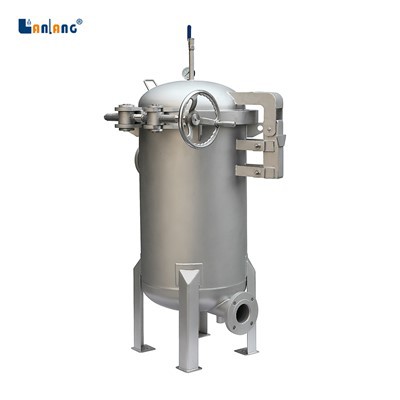
The primary function of a bag filter housing is to remove solid particles and contaminants from liquids in industrial processes. It acts as a containment vessel for filter bags, which capture and retain particles suspended in the liquid as it passes through the housing. The goal is to achieve effective filtration, ensuring that the processed liquid meets required quality standards by minimizing the presence of impurities. Bag filter housings are widely used in various industries, including water treatment, chemical processing, food and beverage production, pharmaceuticals, and more, where maintaining the purity of liquids is crucial for product quality, process efficiency, and regulatory compliance.
How Does a Bag Filter Housing Differ From Other Filtration Systems
Filter media
Bag filter housings use filter bags as the primary filter media. These bags are typically made of materials like polyester, polypropylene, or nylon. In contrast, other filtration systems may use different types of media, such as cartridges, membranes, or screens.
Filtration mechanism
Bag filter housings operate on a depth filtration mechanism. The filter bags capture particles throughout their thickness as the liquid passes through. This is different from surface filtration mechanisms used in systems like cartridge filters, where particles are mainly captured on the surface of the filter media.
Filtration capacity
Bag filter housings often have a larger filtration capacity compared to some other systems. The design allows for more substantial amounts of contaminants to be retained without causing a significant pressure drop, making them suitable for applications with higher flow rates and varying particle loads.
Ease of replacement
Replacing filter bags in a bag filter housing is often a simpler and more straightforward process compared to some other filtration systems. This ease of replacement contributes to reduced downtime during maintenance.
Versatility
Bag filter housings are versatile and can accommodate a variety of filter bag materials, micron ratings, and sizes, making them suitable for a wide range of applications. This versatility is advantageous in industries with diverse filtration requirements.
Continuous operation
Some bag filter housings, particularly multi-bag systems, allow for continuous operation even during maintenance. This is achieved by diverting flow to the unaffected bags, reducing downtime and ensuring uninterrupted filtration.
Size and configuration
Bag filter housings come in various sizes and configurations, including single-bag and multi-bag designs. Their compact design makes them suitable for applications with space constraints. Other filtration systems may have different shapes and sizes.
Application areas
Bag filter housings are commonly used in industries such as water treatment, chemicals, food and beverage, and pharmaceuticals. Other filtration systems may be preferred in specific applications, such as membrane filtration for ultrafiltration or reverse osmosis in water purification.
In Which Industries are Bag Filter Housings Commonly Used
Water treatment
Bag filter housings are extensively used in water treatment plants to remove impurities, sediments, and particulate matter from water sources, ensuring the production of clean and safe drinking water.
Chemical processing
In the chemical industry, bag filter housings are employed to filter chemicals and solvents, preventing contaminants from affecting the quality of chemical products and maintaining the integrity of chemical processes.
Food and beverage
Bag filter housings play a crucial role in the food and beverage industry by filtering liquids such as juices, syrups, edible oils, and other ingredients to maintain product quality and meet hygiene standards.
Pharmaceuticals
Bag filter housings are used in pharmaceutical manufacturing to filter pharmaceutical solutions, ensuring the removal of particles and contaminants to meet strict quality and safety standards.
Oil and gas
The oil and gas industry employs bag filter housings to filter hydrocarbons, impurities, and solid particles from various fluids, including crude oil, natural gas, and hydraulic fluids.
Automotive
Bag filter housings are used in automotive manufacturing processes to filter coolants, lubricants, and other fluids, preventing contaminants from affecting the performance of automotive components.
Pulp and paper
In the pulp and paper industry, bag filter housings filter liquids used in the manufacturing process, helping to remove debris and contaminants that could impact the quality of paper products.
Electronics manufacturing
Bag filter housings are employed in electronics manufacturing to filter process fluids, such as those used in circuit board production, to ensure the cleanliness and reliability of electronic components.
Metalworking and machining
Bag filter housings are used to filter cutting fluids and coolants in metalworking and machining processes, preventing the accumulation of particles that could affect the precision of machining operations.
Wastewater treatment
Bag filter housings play a role in wastewater treatment facilities by capturing and removing solid particles and pollutants from wastewater before it undergoes further treatment or is discharged.
Can You Explain the Process of Replacing Filter Bags in a Bag Filter Housing



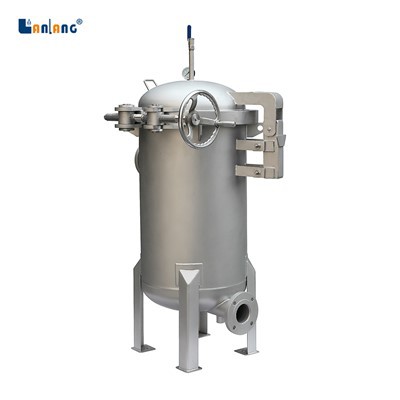
Drain the housing
If possible, drain the liquid from the housing to minimize spillage and facilitate easier bag removal. Open the drain port at the bottom of the housing.
Access the housing
Open the housing by loosening the bolts or clamps securing the lid or cover. The method of access (top entry, side entry, etc.) depends on the design of your bag filter housing.
Remove the old filter bag
Carefully pull the old filter bag out of the housing. Be cautious to prevent any spillage or contamination. If the bag is caked with material, use a gentle shaking or tapping to dislodge excess particles.
Inspect the interior
Inspect the interior of the housing for any signs of damage, corrosion, or debris. Clean the interior if necessary. Ensure the basket or support structure is in good condition.
Install the new filter bag
Ensure the replacement filter bag is the correct size, material, and micron rating for your application. Insert the new filter bag into the housing, making sure it is properly positioned and securely seated on the basket.
Check seals and gaskets
Inspect the housing seals and gaskets. Replace any damaged or worn seals to ensure a proper seal and prevent leaks during operation.
Close and secure the housing
Close the housing cover and secure it with bolts or clamps. Follow the manufacturer's instructions for the proper tightening sequence and torque specifications.
Vent the system
If applicable, vent the system to remove any trapped air before restarting the pump. This is typically done using the vent ports or valves.
Restart the system
Turn on the pump or restart the system to resume the flow of liquid through the bag filter housing.
Check for leaks
Monitor the housing for any signs of leaks. Tighten bolts or clamps if needed. Verify that the system is operating within the desired pressure range.
What Safety Precautions Should Be Taken When Working With Bag Filter Housings
Depressurization
Before performing any maintenance or replacing filter bags, ensure that the system is depressurized. Open any relief valves to release pressure and prevent the risk of sudden releases.
Personal protective equipment
Wear appropriate ppe, including gloves and safety glasses, to protect against contact with liquids, chemicals, or sharp edges during maintenance activities.
Isolation and lockout/tagout
Isolate the bag filter housing from the rest of the system during maintenance. Implement lockout/tagout procedures to prevent inadvertent energizing or pressurization of the system.
Venting
Vent the system properly to release trapped air before opening the housing. This helps prevent sudden releases of pressurized air or liquid.
Draining
If applicable, drain the liquid from the housing before maintenance to minimize spillage and reduce the risk of exposure to hazardous substances.
Inspect seals and gaskets
Inspect seals and gaskets regularly and replace any damaged or worn components. Proper seals are critical for preventing leaks.
Use tools safely
When using tools to open or close the housing, follow proper tool safety procedures. Be cautious of pinch points and sharp edges.
Emergency procedures
Establish and communicate clear emergency procedures for responding to unexpected issues, leaks, or system failures. Ensure that personnel are trained to respond appropriately to minimize risks and downtime.
Avoiding contamination
Take measures to prevent contamination of the filtered product or the surrounding environment. Follow proper hygiene practices and use clean tools and equipment.
Proper lighting
Ensure adequate lighting in the work area to facilitate safe and accurate maintenance activities.
Stainless steel
Stainless steel is a popular choice due to its corrosion resistance and durability. Both 304 and 316 stainless steel are commonly used in bag filter housing construction. Stainless steel housings are suitable for a wide range of applications, including those involving corrosive liquids.
Polypropylene
Polypropylene is a thermoplastic polymer known for its chemical resistance. Bag filter housings made of polypropylene are often used in applications where resistance to acids, alkalis, and certain solvents is crucial.
Carbon steel
Carbon steel is another widely used material, especially in industrial applications where cost is a significant factor. Carbon steel housings may be coated or lined to enhance corrosion resistance.
Aluminum
Aluminum is a lightweight metal with good corrosion resistance. Aluminum bag filter housings are used in applications where weight is a concern, and moderate corrosion resistance is sufficient.
Exotic alloys
In some specialized applications, exotic alloys such as hastelloy or inconel may be used. These alloys offer exceptional corrosion resistance in challenging chemical environments.
FAQ
As one of the leading bag filter housing manufacturers and suppliers in China, we warmly welcome you to wholesale bag filter housing in stock here from our factory. All customized products are with high quality and competitive price.
Stainless steel water filter bag, strong acid resin, sodium polyphosphate










